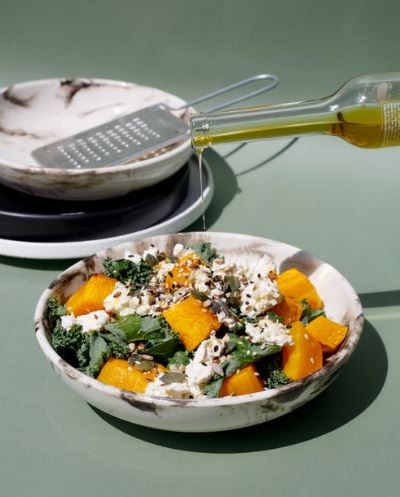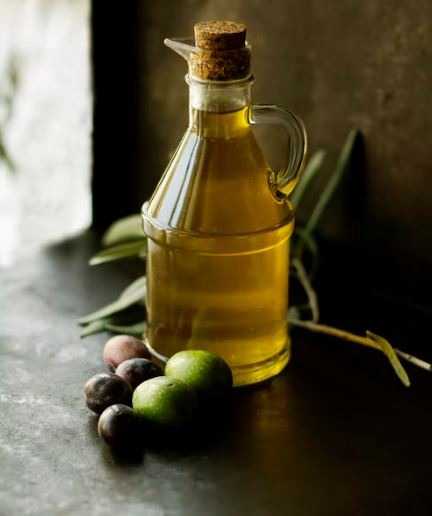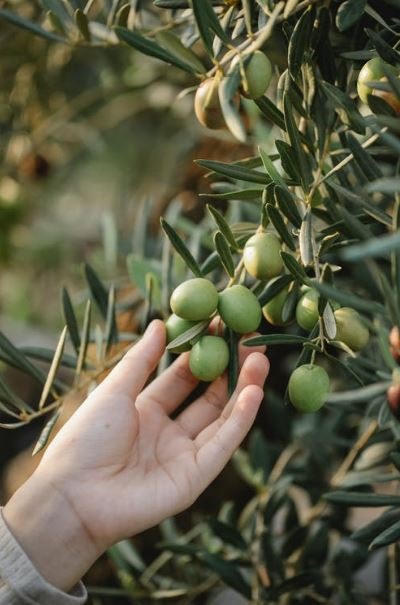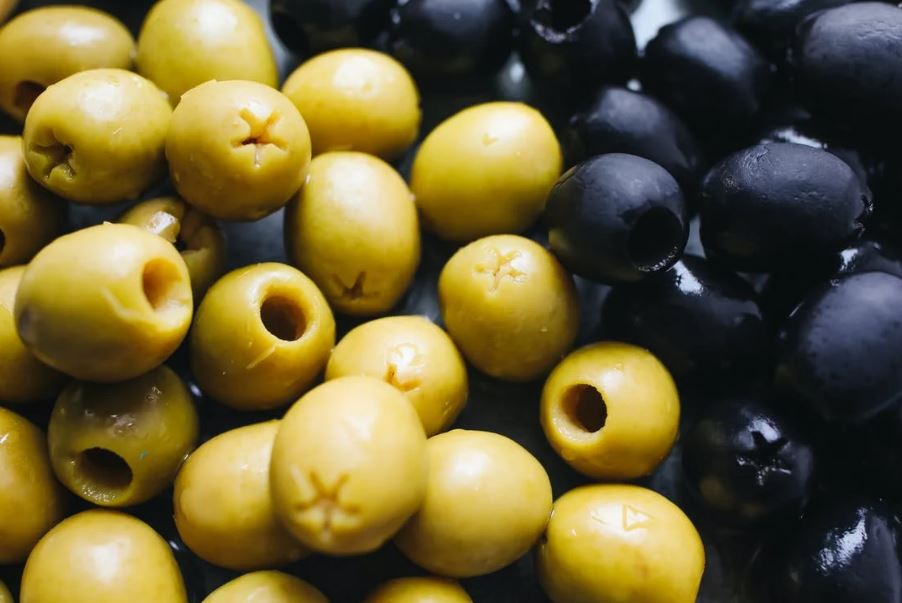Olive oil comes from a traditional tree crop of the Mediterranean Basin known as olives. It is a liquid fat extracted from the oil of olives by pressing them. Olive oil is commonly used for different cooking methods such as salad dressing or frying food. It can be found in traditional oil lamp fuels as well as in cosmetics, soaps, and pharmaceuticals. In Mediterranean cuisine, olive oil is one of the three fundamental food plants whereas, the other two are grapes and wheat.
The production of olive oil has a millennial tradition in the region of central Italy. Italy is not only known for its cultural treasures and unique landscapes but also extra virgin olive oil. Tuscan olive oil comes from the local varieties of olives such as Frantoio and Moraiolo. It is distinguished because of its golden yellow color and fresh fruity fragrance.
Tuscan Olive Oil
Homer once called it liquid gold. The Greeks used to rub it on their body for good luck. The tree is a symbol of a peace offering. This history of olives and olive oils is long and diverse. In Tuscany it? a staple agricultural product and an integral part of Tuscan cooking.
Characteristics of Tuscan Olive Oil
Mainly Frantoio and Moraiolo olive varieties are used for producing Tuscan olive oil. Its golden yellow color and fruity and fresh fragrance distinguish it from other varieties of olive oil. On the palate, it is spicy and fruity with aromas of freshly cut artichoke heart, grass, and green olives. Tuscan olive oil is accompanied by a slightly bitter almonds note and a tart, especially the freshly cold-pressed oil.
Today, it is appreciated by the olive growers who work overtime during and after the harvest. They prefer to dip a fresh slice of bread in the new oil and drizzle it over the slice of toast. It gives a vintage taste of goodness and there is no better way to enjoy the Tuscan olive oil.
Ways To Enjoy Tuscan Olive Oil
You already know the best and easiest way to enjoy Tuscan olive oil. Once you have drizzled a few drops of fresh Tuscan olive oil on a lightly toasted white bread, spread some spicy tomato. Add a few leaves of basil or arugula and you will have a perfect bruschetta. It is one of the perfect starters that come with various recipes. Also, you can try arugula and pecorino Toscana salad.
Tuscan olive oil can be used for making perfect salads that are tasty and light with healthy toppings. In Tuscan cuisine, it is a perfect condiment. For example, you can make a hearty spring bread soup like Ribollita, a typical Tuscan vegetable soup. For stewed and grilled meats, you can use it to make Stracotto del Chianti.
In all the famous Italian dishes, you can add a few drops of Tuscan olive oil before serving it to your guests. It gives an icing on the cake of fresh spice.
A Healthy Alternative
The benefits of olive oil are traveling the globe – it has quickly been taking the place of butter in many American households. As we learn more about the product, the more we love it.
First, it? the healthy fat – it is a mono-unsaturated fat, the kind of fat that more doctors are encouraging Americans to digest. Secondly, olive oil is ideal in cooking, as it does not burn when heated. It is able to sear in flavors of the food, as well as contribute its own. Perfect in salad dressings, it adds flavor to your vinaigrette. The Tuscans usually have it drizzled over everything – pastas, bread, meats and vegetables. It? healthy and delicious.
Production of Tuscan Olive Oil
The fact that Tuscan olive oil is widespread and well known deceives the total share of Tuscan olive oil in production. It is lower than the whole Italian olive oil production. It is due to the cold winter as compared to the southern regions of the country. For example, more than half of the olive oil production is done by Puglia such as 51%.
In the 2014/15 season, 222,000 tons of olive oil were produced across Italy out of which just 6,000 tons were produced in Tuscany. The dismissal harvest was because of the unfavorable weather conditions that caused massive damage to the olive harvest. In 2015/16 production, Tuscany reached 19,202 tons, whereas, it was 476,620 tons throughout Italy.
The harvesting of olives takes place from mid-October to mid-December. Harvesting of olives is always done by hand to get an authentic taste and the best quality. They are picked directly from the tree or combed. Another traditional method of picking olives is brucatura. The branches of olive trees are struck with long sticks that make them fall to the ground.
Not All Olive Oils Are The Same
One may think all olive oils are similar, but there are many factors that make olive oils unique. First, the type of tree. Olive oils are made from a variety of different olive trees, the most common in Tuscany being frantoio, leccino and moraiolo. The tree can determine the color and flavor characteristics of the oil. Second, the terroir. Similar to vines, olives produce distinctive flavors that reflect the terroir of where the olive tree is grown. Like wine, olive oil is resultant of its climate, soil and surroundings.
Tuscan olive oil is typically a rich green color and in general, can be divided into two categories ?sweet (dolce) and spicy (piccanti). The highest quality olive oil is extra virgin. To be called virgin, olive oil must be cold pressed, so the olive is pressed in tact, pit and skins together, with no chemical process involved. The ?irginity?of the oil is then determined by the acid level ?extra virgin olive oil must have under 0.10% acidity naturally.
Shelf life
Olives are harvested ?hand picked – in November & December, and bottled shortly after. While olive oil seems to be a non-perishable item, it can in fact go very bad. The best time to use olive oil is within the first year of bottling, two years maximum. Unfortunately, the US does not have laws requiring bottling dates on olive oil bottles, although many from Italy will voluntarily print the expiration date on the label. Once opened, a bottle of olive oil should be used within 8 ?10 weeks. Because of this, sometimes it? best to buy small bottles of olive oil if you do not use it too often.
Tuscan Olive Oil – Best Extra Virgin Olive Oil
Olive oil is a liquid fat extracted from the oil of the olives. Olive is a Mediterranean tree crop used to get olives for the extraction of olive oil. In the past, olive oil was known as a gold liquid that was used by the Greeks to rub on their body as good luck. Tuscan olive oil is an integral part of Tuscan cooking techniques. It can be used for frying or dressing salads. Also, you can drizzle it over different types of fruits and vegetables.
Tuscan olive oil is made from the Frantoio and Moraiolo. But remember that not all olives are the same. Each olive tree determines the flavor and color of the olive oil. Extra virgin olive is known because of pure extraction. Also, it is a healthy substitute for other types of cooking oils. It is extracted by cold-pressing olives without going through a chemical process. Once the oil is extracted and bottled shortly after, you can use it within a year or a maximum of two years.







